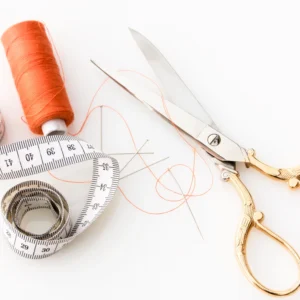
These timeless habits from the Great Depression show how families nearly a century ago stretched every dollar — and how we can still apply them today!
The harsh realities of the early 20th century pushed Americans to become resourceful with whatever they had. Waste was not an option. Every item, no matter how small, was reused, repaired, and repurposed.
In those challenging years, people developed a new way of looking at life. They simplified, focused on essentials, and built creative solutions to survive. Their practical mindset and hands-on skills became priceless tools for living well with less.
Even though today’s world looks very different, we can still learn from their resilience. These habits born out of necessity continue to help modern households cut expenses, reduce waste, and strengthen financial discipline.
This article may contain affiliate links, meaning I could earn a small commission at no extra cost to you if you purchase through my links. As an Amazon Associate, I earn from qualifying purchases. Thank you for supporting this site and keeping it running!

15 Smart Money-Saving Habits from the Great Depression
1. Cut back on restaurant meals.
Eating out is one of the fastest ways to drain your wallet. Cooking at home not only costs less but also gives you control over ingredients. Unlike those in the Depression era, we now have endless budget-friendly recipes online to make home dining simple.
2. Spend only what you earn.
Keeping track of income and expenses is key. If your spending outpaces your paycheck — whether it’s $20k or $200k a year — you’ll always feel broke. Living within your means is the cornerstone of financial stability.
3. Learn basic sewing skills.
People once prized clothing and repaired it whenever possible. Simple stitches, patching holes, or hemming pants can help your wardrobe last years longer, cutting down on costly replacements.
4. Make meat the side, not the star.

Meat is often the most expensive part of a meal. Flip the script: plan dishes around grains, beans, and vegetables while using meat sparingly. You’ll save money and eat healthier too.
5. Keep up with maintenance.
It’s tempting to delay expenses like oil changes or A/C tune-ups when money feels tight. But neglecting them usually leads to larger repair bills later. Small, routine upkeep helps you avoid major financial hits.
6. Plant a garden.
Homegrown food remains one of the most rewarding ways to save. Whether you have a backyard or just a balcony, you can grow herbs, vegetables, and even fruit. Raised beds, square-foot gardening, or winter sowing are all budget-friendly methods to try.
7. Use every part of the animal.
Back then, families didn’t toss out cuts of meat considered less desirable. Instead, they used everything — bones for broth, dark meat for casseroles, and organ meats for hearty meals. This nose-to-tail mindset stretched food further.
8. DIY instead of buying.

Once you know how, making everyday products saves money. Homemade cleaners, soaps, or baked goods cost a fraction of store prices. The bonus? You’ll know exactly what’s in them.
9. Cook from scratch.
Processed and packaged foods add convenience but at a high price. Learning to bake bread, roll pasta, or whip up desserts at home is easier than most imagine — and far cheaper.
10. Preserve the harvest.
If your garden produces more than you can eat, canning is a powerful way to extend its value. Preserving fruits and vegetables ensures that nothing goes to waste and provides food all year round.
11. Forage what nature provides.
Nutritious food often grows wild — berries, nuts, and certain mushrooms can be gathered with a little knowledge. A local foraging guide can teach you what’s safe and seasonal in your region.
12. Reuse food scraps.

Instead of tossing peels and trimmings, look for ways to use them. Onion skins add flavor to stock, citrus rinds can be candied, and veggie scraps enrich compost for your garden.
13. Use every last drop.
Stretch every product to the end — from squeezing out toothpaste tubes to scraping condiment jars. Tiny savings add up when practiced consistently.
14. Trade, share, and borrow.
Why buy something new if a neighbor has it to lend? Bartering goods and services is an age-old system that saves everyone money while building community connections.
15. Choose secondhand.

Thrift stores, consignment shops, and online marketplaces offer nearly everything at a fraction of retail prices. Just be selective to ensure you’re buying durable items worth the savings.




